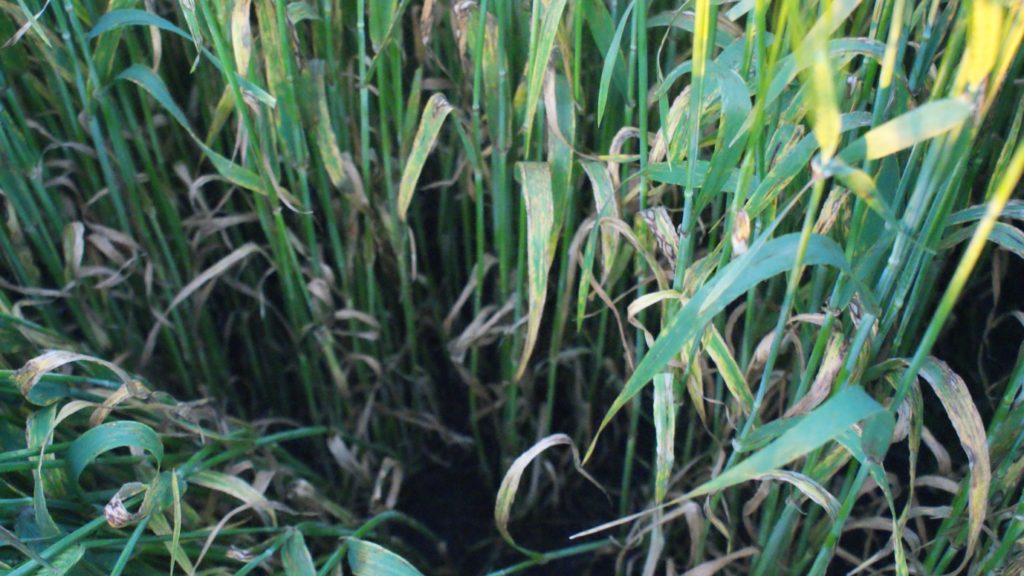Disease control in spring cereals, May 2019
2 May 2019Spring Barley
Spring barley is growing rapidly but looking a little stressed at some sites, largely because of the dry conditions. Don’t leap in with trace elements without knowing they are really needed. Manganese deficiency is common in our soils and ‘at risk’ fields tend to be known to you. Copper is very site-specific and linked to specific soil types. Zinc deficiency is rare in our cereals – it can be linked to high pH and high phosphate levels. Crops are looking a bit stressed at some sites and there is some stress spotting, but we have looked at several and this is not ramularia. You can tell the difference as it is not bounded by the veins, nor does it go straight through the leaf. It is very early for ramularia and really it is only damaging on leaves 1 and 2 so, despite our concerns about the disease, it is not worth treating for now.
Rhynchosporium is the main worry at the T1 timing. With drier springs and more resistant varieties it is less commonly damaging but because it is hard to eradicate crops are often treated protectantly to keep it out. Leaving a crop totally untreated, especially if intended for a quality malting or distilling market, is a risk. Minimizing any stresses to the crop is an important strategy in keeping a lid on ramularia, and the presence of other diseases such as net blotch is obviously one stress factor, but one we can do something to manage these stresses. For that reason, we usually favour using T1 fungicides options at the start of the programme but tailored to the risk.
Spring oats
Mildew is the main risk in the spring crop in susceptible varieties like Aspen. Options at T1 are much as for the winter crop; seek guidance from your agronomist or agricultural adviser.
Sign up to the FAS newsletter
Receive updates on news, events and publications from Scotland’s Farm Advisory Service

